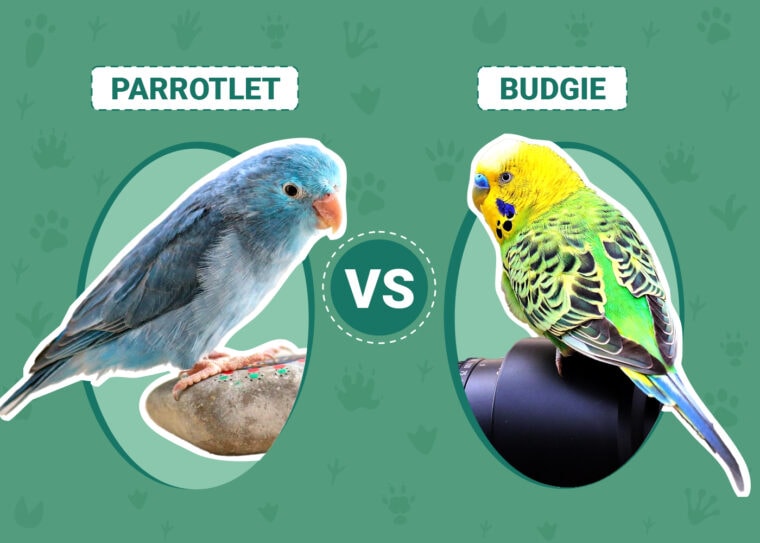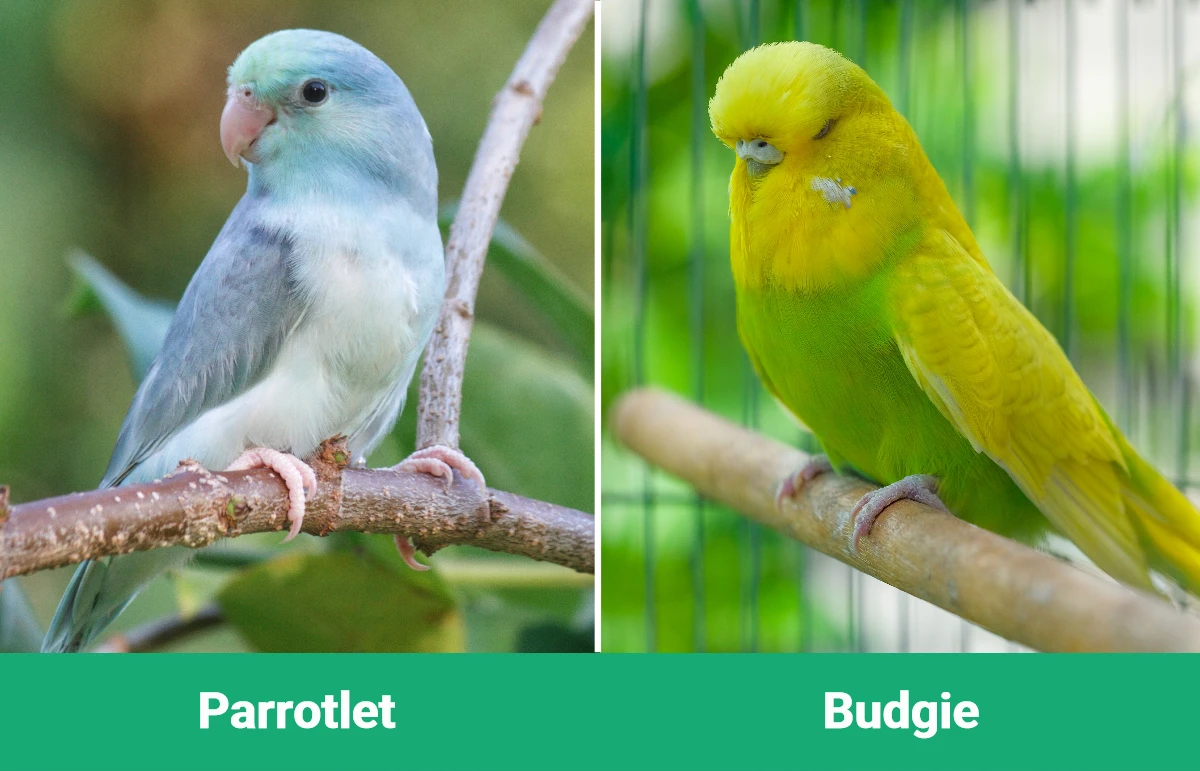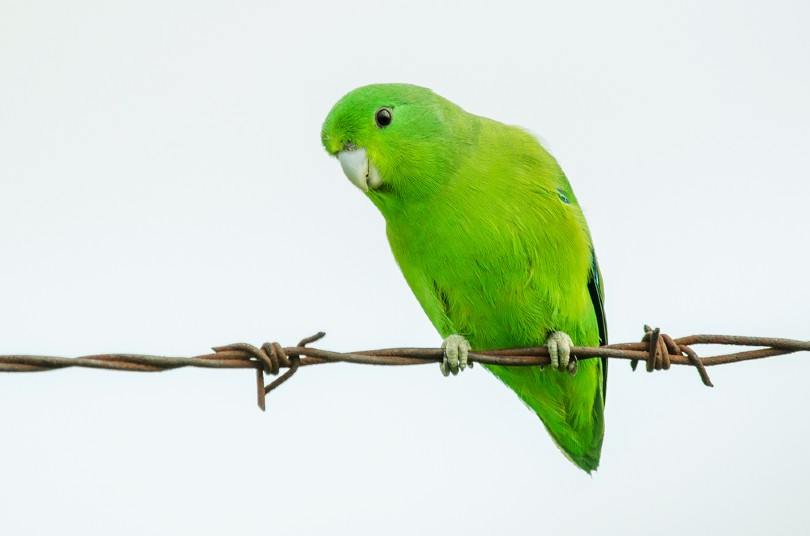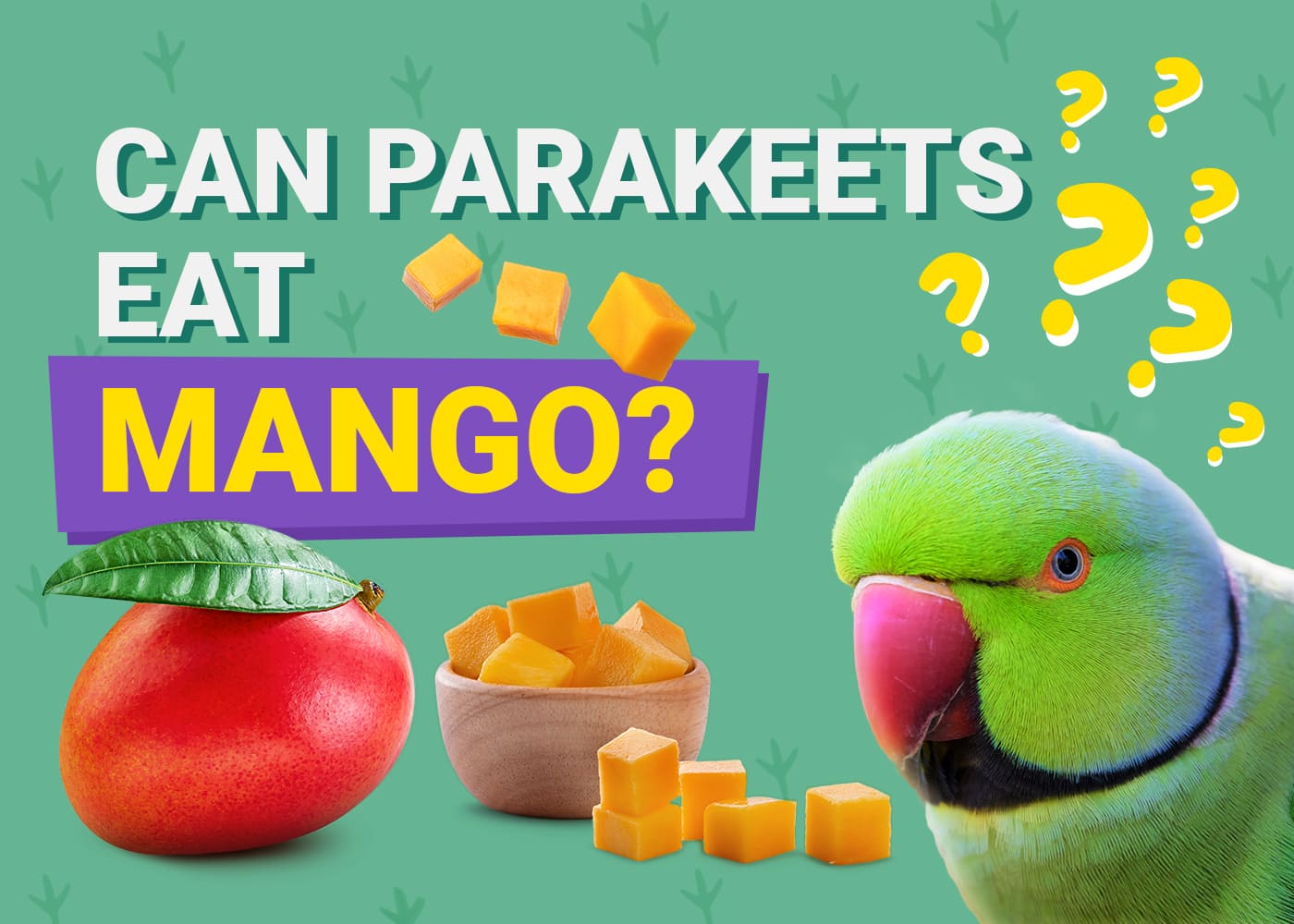
Click to Skip Ahead
Even if you can have a dog or cat, you can still enjoy the pleasure of owning a bird. Nearly 6 million households would agree with you too! A Parrotlet or a Budgie will make an excellent companion. Either is a suitable choice for a first pet for your or your child. However, while their care is similar, there are a few differences between the two species that may tip the scale one way or another.
This guide covers the basics, along with specific things that you should know before you invite a bird into your home. Bear in mind that both of these birds are relatively long lived, making the decision to get one a significant commitment for you and your family. We also discuss the care of each species and what you can expect as a pet owner.
Visual Differences

At a Glance
Parrotlet Overview

The name Parrotlet is a general term that describes the smallest parrots of primarily three different genera. All are native to Central and South America. It’s worth noting that their typical habitat is the rainforest. That can give you valuable insight into what this bird needs to be happy and comfortable in your home.
Personality / Character
The Parrotlet is an intelligent bird with an attitude. In some ways, it acts like a Chihuahua, ready to take on any foe, real or imagined. That fact makes this one a better choice for someone who has worked with birds before and knows what to expect. Early socialization is imperative to keep your pet from developing bad habits like nipping.
Like other related avian relatives, this one needs challenges so it doesn’t get bored. The same thing applies to Budgies. Pairs form strong bonds, which makes sense from an evolutionary perspective. They will defend their space fiercely to safeguard it. Parrotlets aren’t overly noisy, but they are vocal when they have something to say.
Exercise and Human Interaction
The Parrotlet is a social animal. If you get one as a pet, it’s imperative to interact with it daily or risk losing its agreeable nature. We suggest a few hours of exercise and play every day to keep its feistiness in check. It’s an excellent way to reinforce the bond between you and your pet. It will also give your Parrotlet the mental stimulation that it needs to stay healthy.
Always keep an eye on your Parrotlet if you let it out of the cage. Its instinct is to gnaw on wood—no matter if it’s your furniture. You can satisfy this gnawing need by adding wooden toys to its cage.

Training
The Parrotlet is quite capable of learning tricks, especially if you use treats as a motivator. Be consistent and use positive reinforcement. If you work closely with your pet, it might pick up a few words too. We suggest swapping out toys occasionally to challenge the bird mentally. Interactive toys are ideal for encouraging them to learn new tasks.
Health & Care
The essential thing to remember when owning a bird—especially one from a tropical place—is to place its cage in a draft-free area. The same caution applies to heat vents and registers. Their native habitat is relatively stable with few drastic temperature shifts. Covering the cage at night will keep your pet comfortable and help settle it down for the night.
The Parrotlet does best either alone or in a pair with no other birds in the cage. Daily cage cleaning is necessary as a routine of its care. Offer fresh food and water every day. We recommend getting perches of different diameters at varying heights to encourage your Parrotlet to explore its world. Large cages are best, especially if you have more than one pet.
Remember that your pet is more likely to bond with you if it doesn’t have a mate.
Suitable For:
Individuals who have experience handling birds are an excellent fit for the Parrotlet. If you can get a pet that has been hand-raised, that’s even better. Plan on getting bit a time or two until you both get used to each other. The same caution applies to the Budgie, but the Parrotlet has the bigger beak of the two.
Budgie Overview

The Budgie, or more formally, the Budgerigar, and in some countries, the Parakeet, has been a familiar resident of pet stores and conservatories since the mid-1800s. Unlike the Parrotlet, the Budgie’s habit is the dry shrublands of its native Australia. While Parrotlets are perhaps less common, these birds are ubiquitous. They’re also relatively inexpensive, which helps explain their popularity.
Personality / Character
Budgies/Parakeets are sweet birds with a sense of humor and friendly nature. These pets will provide hours of amusement with their antics. They are also intelligent animals with a playful side that you and your children will enjoy. Like the Parrotlet, the Budgie is an active bird. You’ll likely find that it is always in motion.
While the Parrotlet acts willfully sometimes, the Budgie always seems happy. It is a chatty pet, especially if you have more than one. However, its voice isn’t as loud as the Parrotlet, with no shrill screams. You’ll likely find that covering the cage is an excellent way to cut down the chatter at night.
Exercise and Human Interaction
If you have only one Budgie, it’s essential that you interact with it daily. This bird thrives on companionship, whether it’s an avian friend or you. It may surprise you to learn that birds can become obese if they don’t get enough exercise. Fortunately, this bird loves to play. It’ll investigate anything new that you put in the cage.

Training
The Budgie can pick up a few simple tricks with the right motivation, i.e., treats. It may even learn a few words, though its scratchy voice might make it hard to understand them. This bird has decent problem-solving skills, so it may figure out how to open the cage door if there’s not a clip to secure it. The Budgie’s gentle disposition and eagerness to please will make training easy.
Health & Care
The Budgie is a relatively hardy pet, as long as you place the cage away from drafts. Offer fresh food and water daily. Your Budgie will also enjoy a millet sprig to gnaw on occasionally. You can put in a cuttlebone as a calcium source and a way for your bird to polish its beak. You’ll likely find that your pet will treat it as a toy too.
We suggest regularly swapping out toys for your Budgie, as you would for a Parrotlet. This bird needs mental stimulation to prevent boredom and feather plucking. A mirror is an excellent choice for entertaining your Parakeet. Make sure cleaning any toys that you add is part of your regular cage maintenance.
Suitable For:
First-time pet owners and older children will find that the Budgie is a delightful pet. While it isn’t a cuddly choice, this bird will reward you with its friendliness and playful nature. It’s easy to care for, making it an excellent way to teach kids responsibility.
Summary
Owning a bird is a different experience than owning other pets, especially ones that you can handle more. However, that doesn’t mean you can’t bond with either a Parrotlet or Budgie. We suggest getting a Parrotlet for older children or individuals who have been around birds before. This species is feisty and may prove to be more of a challenge than a Budgie if you’re afraid of getting bit.
Basically, you can’t go wrong with a Parakeet. These happy, friendly birds are a joy to own. While they don’t live as long as Parrotlets, they make the best use of the time that they share with you with their bubbly personalities and fun sense of humor.
Featured Image Credit: Top – klickblick, Pixabay | Bottom – Kyli Petersen, Shutterstock










